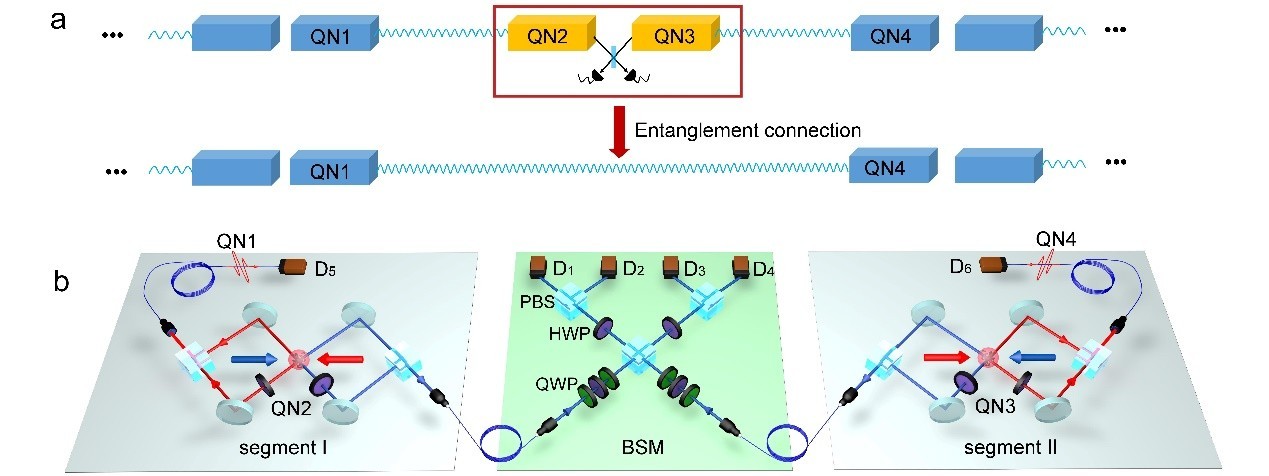Realization of long-distance quantum communication and large-scale quantum networks is one of the central goals in quantum information science, and the quantum repeater protocol is a promising approach for achieving this goal.
Recently, a research group, led by Professor Luming Duan at Tsinghua University, reported an experimental realization of the entanglement connection of two quantum repeater segments with an efficient memory-enhanced scaling, which demonstrates a key advantage of the quantum repeater protocol, creating a cornerstone for the development of future large-scale quantum networks. This work, entitled Experimental demonstration of memory-enhanced scaling for entanglement connection of quantum repeater segments was published in Nature Photonics.

Direct communication of quantum signals in optical fibers is hindered by the inevitable exponential loss of photons with communication distance, and the quantum repeater protocol provides a promising approach to solve this problem. A well-known approach to the implementation of quantum repeaters is the Duan–Lukin–Cirac–Zoller (DLCZ) scheme proposed in 2001 by Prof. Duan and his collaborators, and many impressive experimental advances have been reported with this approach. However, for implementation of quantum repeaters, a goal that remains outstanding is demonstrating a change in scaling of efficiencies enabled by quantum memories for the entanglement connection of two quantum repeater segments—the key ingredient for the quantum repeater protocol to achieve efficient scaling. Professor Duan’s group demonstrate in their experiment that they have two atomic quantum memories with storage times of tens of milliseconds, long enough for on-demand entanglement swapping. Atom–photon entanglement is generated asynchronously in two long-lived quantum memories, and the entanglement swapping between them is implemented on demand only when both sides have successfully registered a photon (in general at different times). This experiment, as a demonstration of the change in scaling in the efficiencies for entanglement connection of two quantum repeater segments, provides a key enabling ingredient for the realization of larger-scale quantum repeaters and quantum networks.
Co-first authors of the paper are the IIIS Alumnus Yunfei Pu (currently a postdoc at the University of Innsbruck) and the IIIS PhD Candidate Sheng Zhang, and the corresponding author is Professor Luming Duan. Other co-authors include IIIS Phd candidates Nan Jiang, Wei Chang, & Chang Li and IIIS postdoc Dr. Yukai Wu. The research was funded by the National Key Research and Development Program (2016YFA0301902), the Beijing Academy of Quantum Information Sciences, the Frontier Science Center for Quantum Information of the Ministry of Education of China, the Tsinghua University Initiative Scientific Research Program, the Shuimu Tsinghua Scholar Program and the International Postdoctoral Exchange Fellowship Program.
The paper is available at:https://www.nature.com/articles/s41566-021-00764-4
(By Yuying Chang)